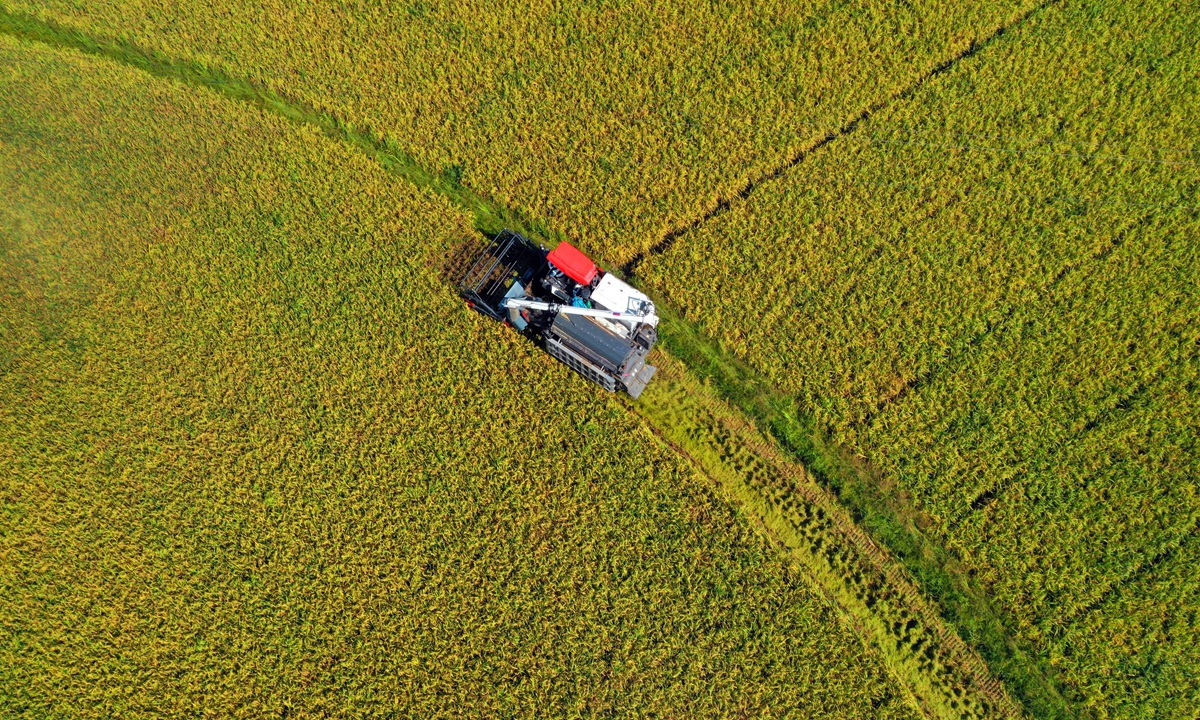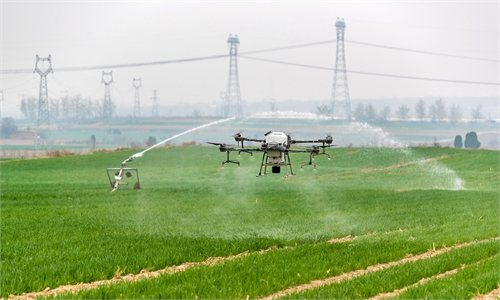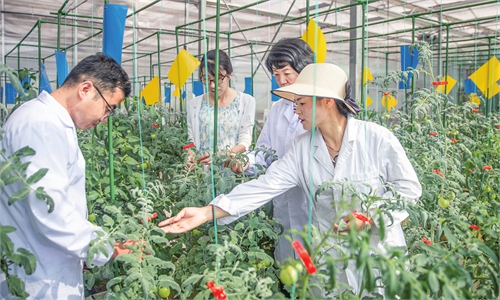China to strengthen food emergency security system in responding to external uncertainties: officials

Farmers harvest early rice in Yongfeng, East China's Jiangxi Province on Tuesday. In the heat of the summer rush, farmers are busy harvesting 420,000 mu (28,000 hectares) of mature early rice to ensure that these summer grains are put into silos. China has set a grain harvest goal of 650 million metric tons and has achieved the target for six years in a row. Photo: VCG
Grain prices and supplies have remained stable in China, a major producer and consumer of agricultural products from around the world; and the nation will continue to strengthen the national food emergency security system in responding to external uncertainties, officials said on Thursday.
"China's grain prices have generally remained stable, operating within a reasonable range, the grain market has not been out of stock, and we have maintained sufficient supplies despite volatility in the global market affected by such factors as the pandemic, economic downturn, extreme weather and geopolitical conflicts," Cong Liang, vice chairman of the National Development and Reform Commission, the country's top economic planner, said at a press conference on Thursday.
The country's staple food self-sufficiency rate is above 100 percent, and the grain self-sufficiency rate is above 95 percent. Per capita grain stockpiles stand at 480 kilograms, higher than the internationally recognized grain security line of 400 kilograms, Cong said.
China has had bumper harvests for 19 consecutive years and its annual grain output has exceeded 650 million tons for eight years in a row. Last year, grain output totaled about 686.53 billion tons, a record high, data from the National Bureau of Statistics (NBS) showed.
The bumper harvest came despite extreme regional weather conditions, including rare autumn flooding in the northern part of the country and extended drought and high temperatures in the south, on top of COVID-induced disruptions.
Grain output is expected to reach 694 million tons in 2023, up 1.1 percent year-on-year, with the output of rice and wheat remaining stable and that of corn and soybeans increasing, according to a report released in April by the Ministry of Agriculture and Rural Affairs on the outlook of China's agricultural sector from 2023 to 2032.
It predicted the growth rate of grain production over that period could be 1.2 percent on average annually.
China is also striving to make grain transport and storage more efficient.
Cong, who is also head of the National Food and Strategic Reserves Administration (NFSRA), said the administration has been working to modernize grain storage and logistics, which has increased the storage capacity of qualified grain warehouses to nearly 700 million tons across the country.
Nie Fengying, deputy director of the Agricultural Information Institute of the Chinese Academy of Agricultural Sciences, told the Global Times on Thursday that China has spared no effort in recent years to strengthen its grain supply ability thanks to the use of more advanced technologies from farming equipment to the seed industry, enhancing the ratio of intelligent agriculture.
"The nation has given top priority to grain security and made it strategically significant as it has resolved to fill the rice bowls of Chinese people mainly with Chinese grain," Nie said.
China has been heavily reliant on imported soybeans for livestock feed and edible oil, although it is completely self-sufficient in edible soybeans.
China's soybean supply remains stable on the market as domestic output is steadily increasing, coupled with sufficient imports, Lu Jingbo, deputy head of the NFSRA, said at Thursday's conference.
While the repercussions of geopolitical tensions like the Russia-Ukraine conflict, which has entered the second year, might continue weighing on global food security, China's adeptness at responding to emergencies and its responsible approach to feeding its large population would render the country a sustained cornerstone of global food security, industry observers said.
The country will find its groove when it comes to achieving grain security in the face of geopolitical and economic issues because the 2022 harvest helped lay a solid foundation for the country to cope with a complex and volatile international environment by overcoming risks and challenges, Jiao Shanwei, editor-in-chief of industry news website cngrain.com, told the Global Times.


